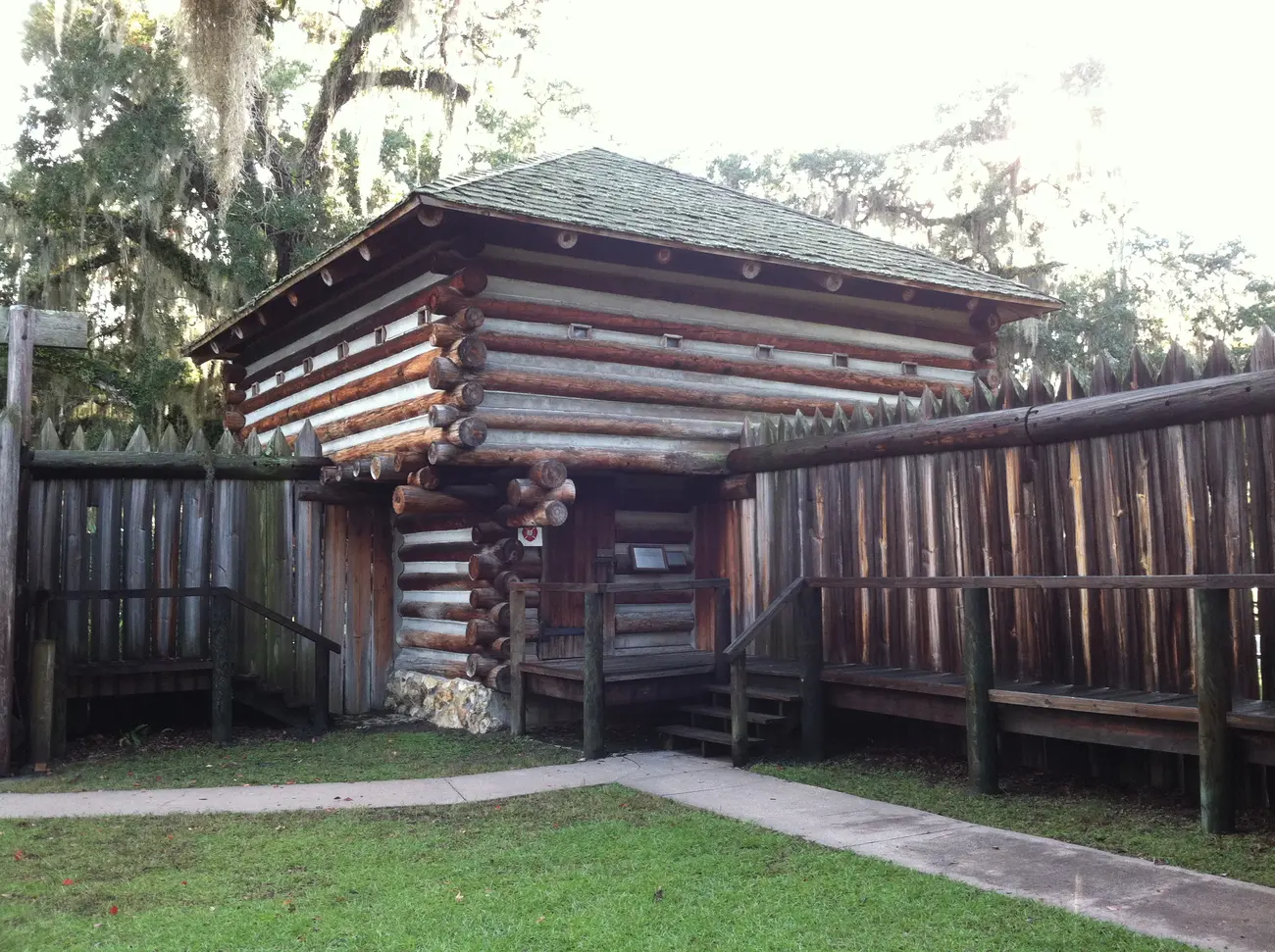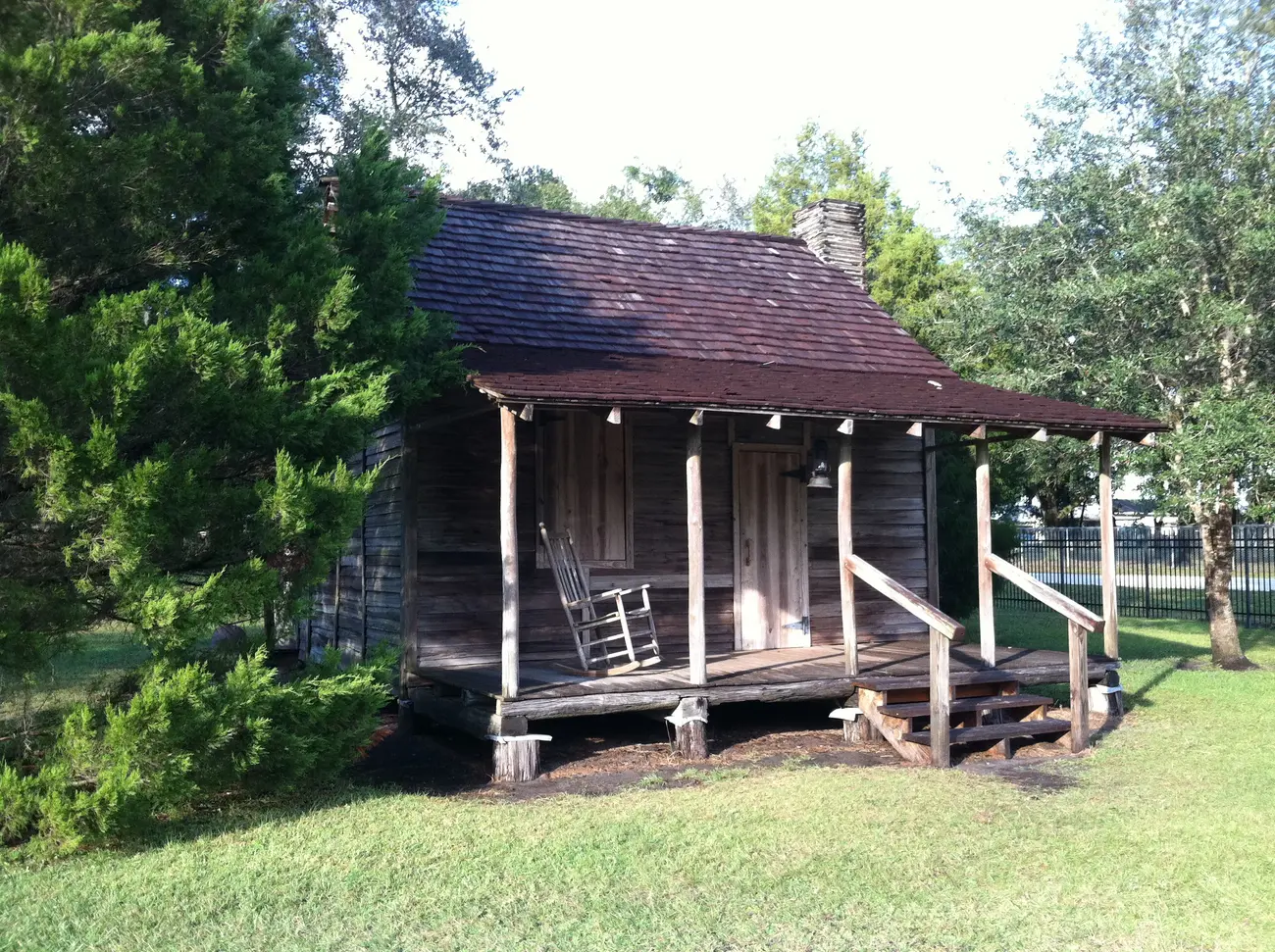Christmas 1837 was not particularly festive for a group of U.S. Army soldiers marching through what is now east Orange County. Instead of celebrating with their families, the soldiers built a fort on the St. Johns River.
A replica of Fort Christmas is located in the rural community of Christmas, about ten miles west of Titusville.
Even before Florida became a Territory of the United States in 1821, the government had shown interest in acquiring the land from Spain. The fact that runaway slaves sought refuge among the Seminole Indians provided an excuse for the U.S. to invade Spanish controlled Florida.
Beginning in the 1700s, the Seminoles, an offshoot of the Creek Indians, fled colonial expansion to the north, settling in Florida. As pioneer settlers began moving into the Florida Territory, their presence created conflicts with the Seminole Indians who were already here.
The Seminole Indian Wars were a series of three prolonged conflicts. The most important of these was the Second Seminole Indian War, which lasted from 1835 to 1842.
Many Florida towns grew around forts that were constructed during the Second Seminole Indian War. For example, Orlando was built around Fort Gatlin, Sanford around Fort Mellon, and Tampa around Fort Brooke.
Some Florida cities retain their Seminole War fort names, including Fort Pierce, Fort Lauderdale, and Fort Myers.
The U.S. Army plan was to build a series of forts in Florida, about a day’s walk apart, so the soldiers could march from one to another during the day, and have someplace safe to stay at night and store their provisions.
“They were on a winter campaign in December of 1837,” says Vickie Prewett, Recreation Specialist at Fort Christmas Historic Park. “They arrived at a place about a mile north of here on December 25th and started building a fort. They named it Fort Christmas because they started it on Christmas Day.”
Fort Christmas is a typical Seminole Indian War fort, made of tall pine pickets. The fort is 80 linear square feet, with two block houses that are 20 square feet each, with a storehouse and a powder magazine within the walls of the fort.
The replica of Fort Christmas serves as a museum with exhibits focusing on the Second Seminole War and pioneer life in Florida.
Fort Christmas Historic Park also includes two cow camps, the Union Christmas School, and several historic Cracker houses that were relocated to the property from their original locations.
“We try to make the homes look like someone was living there and had just stepped out for the day,” says Prewett. “We’ve got a textile exhibit, a post office exhibit, a cattle ranching exhibit, and a hunting, fishing, and trapping exhibit.”
The Cracker houses on display belonged to families with familiar names from Florida’s pioneer days, such as Simmons, Wheeler, Bass, and Yates.
“You see these names repeated in rural communities all throughout the state of Florida,” Prewett says.
Several groups of students visit Fort Christmas Historic Park each week to experience a variety of educational programs.
“My favorite program is Children’s Chores,” says Recreation Specialist Joseph Adams, “where they make and taste butter, wash clothes, snap beans, feed the chickens, and pump water. A lot of the students have chores, but the idea of the kind of chores and daily activities children had to do in the past is quite fascinating to them and very different.”
Fort Christmas Historic Park hosts a Bluegrass Music Festival in March, but their largest annual event is Cracker Christmas, held the first full weekend in December.
“We have about 150 to 175 crafters, people who make hand-made crafts to sell,” says Adams. “We have demonstrations of pioneer skills. The syrup making is a big thing people come back for every year. Soap making, wood carving, weaving, spinning, blacksmithing, we do about 50 to 60 different demonstrations. We also have a Confederate camp.”
Local not-for-profit organizations provide food for Cracker Christmas, including barbeque, ‘gator bites, and beef on a stick.
The U.S. government’s aggressive attempts to remove the Seminole tribe from Florida ultimately failed. Fort Christmas Historic Park is a living reminder of a difficult transitional period in Florida history.
What: 37th Annual Cracker Christmas
When: Saturday, December 6 and Sunday, December 7, 10:00 am to 4:00 pm
Where: Fort Christmas Historic Park, 1300 Fort Christmas Road, off of SR 50
Dr. Ben Brotemarkle is executive director of the Florida Historical Society and host of the radio program “Florida Frontiers,” broadcast locally on 90.7 WMFE Thursday evenings at 6:30 and Sunday afternoons at 4:00, and on 89.5 WFIT Sunday mornings at 7:00. The show can be heard online at myfloridahistory.org.

